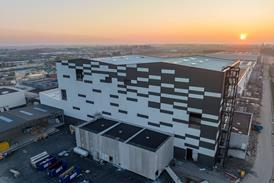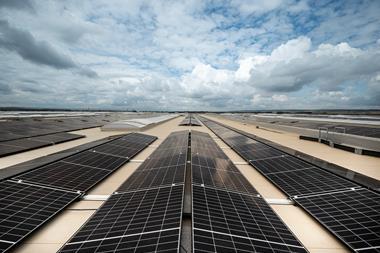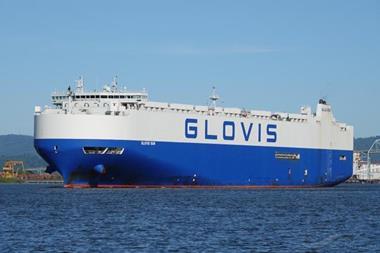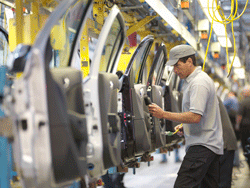 In 2011 the Fukushima tsunami and subsequent nuclear meltdown in the region’s manufacturing hub shook international supply chain networks to the core. With the global automotive industry already reeling from the US financial crisis, dealing with a European market hobbled by the Eurozone debt crisis and scrambling to meet demand in exponentially growing markets such as China and India, the after effect was an immediate need for a complete re-evaluation of the supply chain.
In 2011 the Fukushima tsunami and subsequent nuclear meltdown in the region’s manufacturing hub shook international supply chain networks to the core. With the global automotive industry already reeling from the US financial crisis, dealing with a European market hobbled by the Eurozone debt crisis and scrambling to meet demand in exponentially growing markets such as China and India, the after effect was an immediate need for a complete re-evaluation of the supply chain.
The automotive industry woke up to the fact that, while its just-in-time (JIT) business model and super lean, highly interdependent supply chains were wildly efficient, they were also brittle, and were at increasingly high risk of failure. Simply put, traditional JIT automotive supply chains were not resilient and were susceptible to disruption on a potentially massive scale, putting companies at risk of huge reputational and financial damage.
The ‘butterfly effect’ of the disaster in Japan had a huge impact on Toyota’s ability to operate. But some of its suppliers were devastated. Renesas supplied around 40%* of the chip controllers that power today’s new cars. It has a JIT delivery mechanism, where it delivered chips to the Toyota supply chain within a six-minute gap. Renesas’s only factory in Japan was decimated by the disaster, forcing Toyota to shut down manufacturing immediately all over the world. Toyota’s losses amounted to nearly $3.5 billion, knocking the company from its position as the world’s number one automotive manufacturer.
Industry leaders and supply chain partners have embarked on efforts to craft a revised operating model; supply chains that are simultaneously lean and resilient. This new ‘hybrid’ model retains the principles of JIT and lean, but adds in controlled redundancy and contingent options to improve resiliency and protect against failure.
The evolution toward this hybrid supply chain model is ongoing but more needs to be done if the industry is to be resilient in the face of an increasingly volatile operating environment. Automotive companies are re-balancing their supply chains to build in carefully managed tolerances for ’what if’ scenarios. The goal is to build a resilient supply chain that can tackle conditions of systemic volatility – good and bad – ranging from the ordinary to the unimaginable. To gain a better understanding of these, it is important to look at the industry’s market dynamics:
Trend #1: Global growth and emerging markets
Despite the drag effect of the debt crisis on the European market, global automotive production is forecast to hit record levels each year through 2017, with emerging markets, China and India driving the growth.
Trend #2: Getting closer to the customer
Automotive manufacturers have moved from manufacturing in their home countries and shipping finished vehicles to market, to a model of geographically regionalised production, i.e. manufacturing at, or near, the point of demand. However, in the short term this can elongate and further complicate the supply chain.
“Now, companies are building cars in the US or China, with German or other foreign components. This approach requires a lot more discipline in the supply chain,” said Dennis Drinan, vice president, Global Sector Products & Head of LLP Service, DHL Supply Chain.
Despite this trend, experts estimate that 8-15% of core components – like engines and transmissions – will need to continue to be sourced from strategic suppliers back in the OEM’s home country. This adds significant complexity and risk to the supply chain. [sam_ad id=6 codes='true']
Trend #3: Mega-plants and multiple platforms
Automotive companies are investing heavily in building mega-plants in China, Mexico and elsewhere. “These mega-plants, based on the concept of building to a common engineering platform, produce up to six different vehicles in one location. This improves capacity while reducing the need to build new plants”, comments Mike White, senior vice president, Global Automotive Sector, DHL Supply Chain. As original equipment manufacturers build mega-plants in new geographies, they are asking component suppliers to follow them into supplier business parks – or clusters – in order to provide greater support.
Trend #4: Relentless cost pressure
Logistics costs typically represent 5-10% of manufacturing revenues in automotive. To be more competitive, companies must use every trick in the book to reduce costs and improve market share. This brings the discussion full circle – right back to risk and resiliency.
Meeting the imperative
Supporting the ‘new’ automotive supply chain, with its need for leanness and responsiveness, requires a new level of logistical agility across a global footprint. The days of knowing what is going to happen 30 days out are gone. The automotive industry needs to build supply chains that can switch gears at a moment’s notice, but not break the bank in doing so.
The journey toward creating this ‘hybrid’ supply chain is still in its early stages. Vulnerability is a network-wide issue, and must be addressed on this basis. This requires greater information sharing across the supply chain, particularly with the lead logistics providers (LLP) charged with executing the supply chain operations.
Best practice companies are partnering with global LLPs to re-balance their supply chains, enabling them to remain intact when faced with the next ‘butterfly effect’ scenario. This means building out capabilities, strategies, and tactics that can deliver: additional capacity that can be ‘switched on’ at a moment’s notice; cost-effective solutions and scenarios to potential market or operating scenarios; a ‘control tower’ view of the supply chain; and a collaborative approach to delivering results.
Companies that embrace the ‘new normal’ of continuous – and sometimes radical – supply chain volatility and risk, and put the processes and systems in place to better manage both, regularly outperform their competitors. Companies that ignore or lag behind in addressing supply chain volatility do so at the peril of their bottom lines and their shareholder confidence.
In contrast to Toyota’s massive losses, GM’s CEO, in the third and fourth quarter of 2011, was able to report that the terrible disaster in Japan would have no impact on the company’s earnings, even though it had roughly the same exposure, in terms of supply chain risk.* GM had successfully built sufficient redundancy into its supply chain so that it was able to dynamically reconfigure its supply chain to ensure continued manufacturing of its most profitable vehicles - an approach which the industry needs to learn from, and quickly.
*According to Andrew Zolli, Author of Resilience: Why Things Bounce Back
For more information see Lisa’s new white paper, developed in partnership with DHL, ‘Lean and Resilient: The new automotive supply chain hybrid’ available at http://supplychain.dhl.com/auto-resilience.
Lisa is associate director of the Supply Chain Management Center and lecturer on Supply Chain Management at the Robert H. Smith School of Business, University of Maryland. She also is president of the Harrington group LLC, a supply chain consultancy.
The information in this article is the opinion of the author and does not necessarily reflect those of Automotive Logistics Magazine.



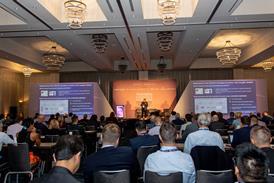




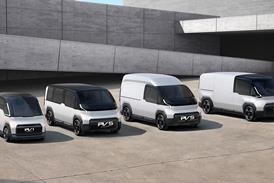




![Global[1]](https://d3n5uof8vony13.cloudfront.net/Pictures/web/a/d/s/global1_726550.svgz)


